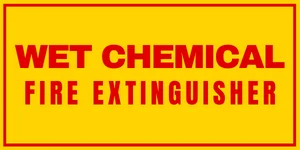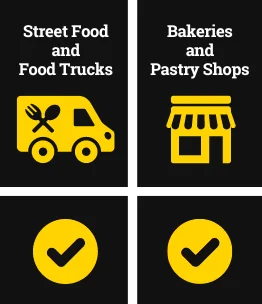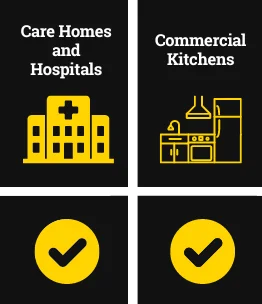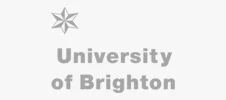Wet Chemical Fire Extinguishers Guide –
All You Need to Know
Wet chemical fire extinguishers are specialised fire-fighting tools designed primarily for combating fires involving cooking oils and fats, such as those found in commercial kitchens.
We delve into the essential aspects of wet chemical extinguishers, including their primary uses, suitability for fire classes, limitations, identification markers, sizes, how they work, benefits, drawbacks, typical applications, and usage instructions.
Quick guide links:
What fires are wet chemical extinguishers used for?
Wet chemical fire extinguishers are specialised fire-fighting tools designed primarily for combating fires involving cooking oils and fats, such as those found in commercial kitchens.
- Class F: Specifically designed for fires involving cooking oils and fats, which require a cooling effect to bring the fire under control and prevent re-ignition.
- Class A: Effective due to their ability to cool and soak combustible materials, preventing re-ignition.

Exclusions (what they should not be used for)
Understanding that wet chemical fire extinguishers are unsuitable for all fire types is critical; this extinguisher type should not be used on:
- Class B fires (flammable liquids other than cooking fats and oils).
- Class C fires (gas fires) because the wet chemical does not address the gas source.
- Class D fires (metal fires) since the chemical agent can react negatively with burning metals.
- Electrical fires as primary targets, although they are safe if accidentally used on electrical equipment due to the non-conductive nature of the wet chemical agent.
How to identify them

Common wet chemical extinguisher sizes
We supply these extinguishers in the following sizes
How they work
Wet chemical extinguishers discharge a solution of potassium that reacts with the burning oil or fat to form a soapy-like substance on the surface. This effectively seals the surface and extinguishes the fire. This process, known as saponification, cools the fire and prevents re-ignition.
Pros and cons
Pros:
- Highly effective on Class F kitchen fires, providing a safe and efficient extinguishing method.
- Leaves a non-toxic, easy-to-clean residue.
- Can be used on Class A fires, offering versatility in a commercial kitchen setting.
Cons:
- Limited use outside of cooking fires and some Class A materials.
- They are larger and heavier than other extinguishers, making them more difficult to handle.
- They are more expensive than traditional extinguishers due to their specialised contents and operation.
Fire extinguisher guide
Keep your people safe with us
Learn about the fire extinguishers variants and how they help extinguish the various fire types.
Common uses, what businesses typically need this extinguisher type
Wet chemical extinguishers are essential in:
- Catering businesses
- Food processing plants
- School and University canteens
- Hotels and hospitality
- Street food and street trucks
- Bakeries and pastry shops
- Care homes and hospitals
- Commercial kitchens
Their specialised design makes them the best choice for managing the unique hazards of cooking fires.
Typical use cases for wet chemical fire extinguishers

Typical use cases for wet chemical fire extinguishers




How to use a wet chemical extinguisher
- Remove the pin: This unlocks the mechanism.
- Where to aim : The wet chemical extinguisher’s nozzle should be up aimed at the base towards the back edge of the container.
- Squeeze the handle: To begin discharging the extinguishing agent.
- Sweep side to side: Cover the entire surface of the burning material. The wet chemical will create a layer that smothers the fire and begins the cooling process.
It is crucial to approach the fire cautiously, ensuring you do not spread the burning oil or fat further. After extinguishing the fire, ventilate the area. A professional should service and refill the extinguisher.
Wet chemical fire extinguishers are critical safety tools in environments where cooking fires are a risk. Understanding their function and proper use is essential for anyone working in or managing a commercial kitchen, as they ensure rapid and effective response in the event of a fire.
Talk to us about your wet chemical extinguisher needs and your wider fire safety requirements
Talk to IPS Fire and Safety about your fire safety responsibilities. From an initial fire risk assessment to team fire safety training and the supply and fitting of fire extinguishers, we’re here to help you keep your people safe and meet your legal fire safety requirements.
Our Fire Safety services
FIRE RISK ASSESSMENTS
FIRE ALARMS
FIRE EXTINGUISHERS
FIRE SAFETY TRAINING
Total client protection since 2004
At IPS, your security is our priority. You need dependable protection 24/7, 365 days a year, and for that reason, our engineers are always available. You can depend on us to ensure you are always protected.
100% INDEPENDENT
We’re fully independent, providing unbiased solutions tailored just for you.
EXPERTISE
CUSTOMER-FIRST
COMPREHENSIVE COVERAGE
We're trusted by some fantastic organisations








Contact us for a free quote
Or call the team on 0333 444 5 999
Our Priority is You
We pride ourselves on the impeccable service we provide our customers. From the first conversation to ongoing support for your fire, security and safety needs, you'll wonder why you left it so long to contact us.

